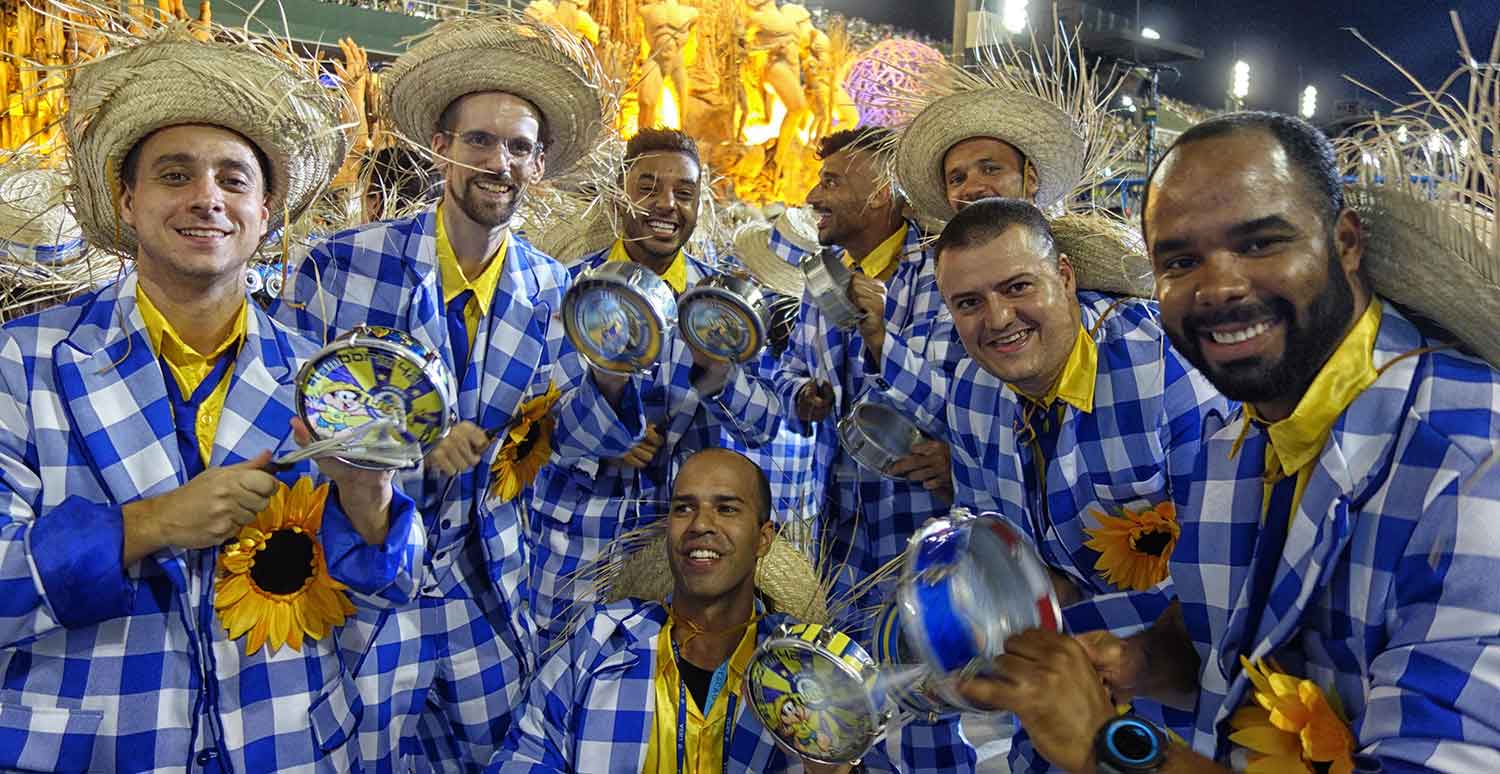
Tamborim
The tamborim is a small frame drum 6 inches in diameter. For playing in the big samba schools, the frame is usually made of metal and the skin of nylon, which is necessary to tune the instrument high. However, there are also tamborins with wooden frames. The tamborim is probably the only unique brazilian samba instrument. In the Samba de Enredo or the Batucada, the tamborim is covered with a plastic skin, tuned very high and played with a slightly flexible plastic stick. In the time early days the tamborins were not built round, but rectangular and covered with natural skins. There is a story circulating that in the past, just before Carnival, all the cats disappeared from the streets because their skins were needed for the tamborins.
In the Pagode or in the Rodas de Samba you can occasionally find tamborins with natural skins, played with wooden sticks. The basic pattern here is the so-called 'Telecoteco' rhythm, which makes it clear in which of the 2 bars one is currently playing.
About 15% of the total number of ritmistas* in the bateria of an sambaschool are tamborins. They usually stand relatively in the front of the bateria (usually directly behind the cuicas or chocalhos) and have a similar function to a horn section in a big band (to reinforce or play around melodies and text lines with a fixed desenho*). However, the tamborins always introduce the first part of a sambas with a so-called 'subida' (rising), then support the rhythm mostly with the classic carreteiro*, and only play less busy lines and patterns in the second part of the sambas.





